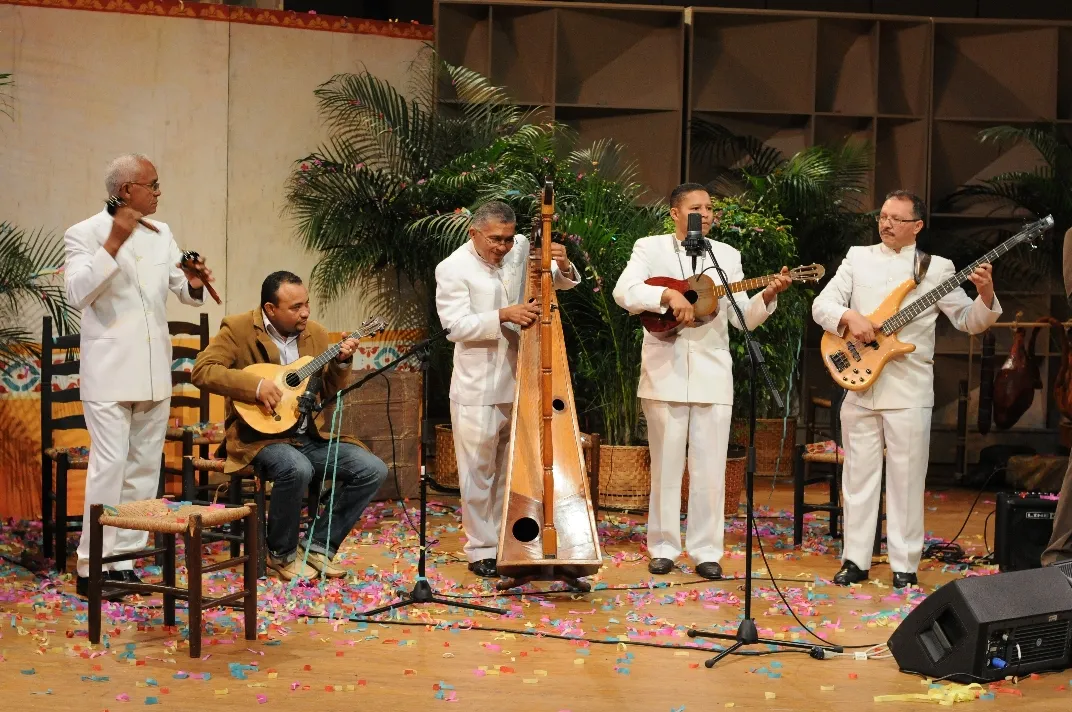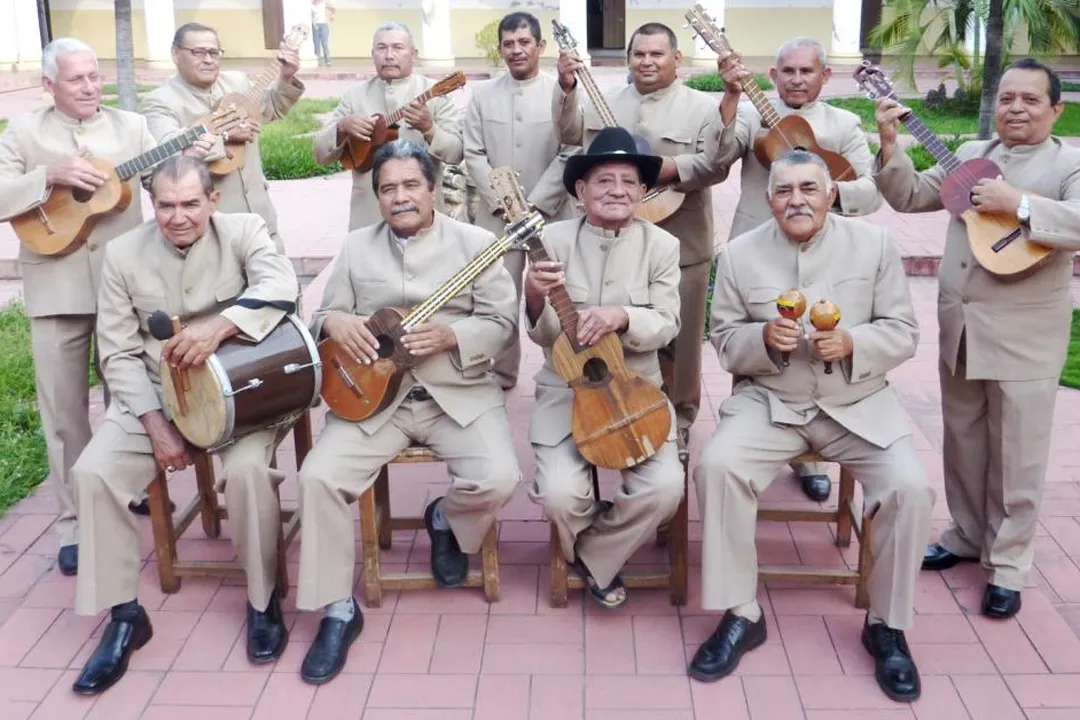Since I started in on this platform I decided to tell the full story of cañonera music, for that one of the stories is about the rhythms that are played in this genre. paThe first post I published in that sense was about the merengue (What is Venezuelan Merengue?), then came one about pasodoble (Vernacular Pasodoble of Caracas, true or false?).

Version en español disponible. ¡Clic aquí!
I will continue now with the joropo, but this is a complicated point to develop because there is so much variety of musical forms enclosed under that name that the task must be divided into parts.

The joropo
Starting it's necessary to say that the joropo is considered the Venezuelan musical expression par excellence and the main dance of this country. It was declared Cultural Heritage of the Nation. The right pronunciation of this word is like Horopo...
But this genre has many variants in different parts of the country. Although the most well-known and widespread (when speaking about the national music it's in reference to this one) is the joropo llanero (plains joropo), which is interpreted equally in the Venezuelan and Colombian plains, there are other variants that are given by geographic zones. Such is the case of the oriental joropo that is interpreted in the states Sucre and Nueva Esparta mainly. The Golpe tocuyano (beat of Tocuyo), which as its name indicates it comes from Tocuyo, in the state Lara and the central joropo, which corresponds to the zone of the states Aragua, Miranda and the capital of the Republic, Caracas. There are other variants that have become known later and that are products of changes that have been suffered in other regions and that have generated the Andean joropo, Guyanés, Guaribero and many others.
The origin of the joropo is included in what has been called cultural exchanges of "round trip", since it is believed that the origin was in some African songs, probably from Guinea, which arrived in the Antilles with the black slaves of Africa, From there was taken to Spain by travelers and there it became the fandango, played with bandurria or harpsichord. It returned then to America and the Venezuelan peasants learned it and interpreted it in their own way, with their own instruments and a new sound, giving rise to the joropo.
The word joropo, could derive from the Arabic word "xoropo", meaning syrup, "jarabe" in Spanish (Possible link with the Tapatío Jarabe?). Although some say that it is related to "soropo", which was a name given to the houses of the poor peasants and it was in those places where this music was danced. Although today this word is used to refer to the rhythm, formerly joropo was referring to a party, to the celebration where this music was danced, because the rhythm was known as "Golpe" (beat) to refer to the quickest and "Pasaje" (passage) to the slowest ones.
Rhythmically there are two patterns that are used in this music. In both, elements of a 3/4 time signature and 6/8 time signature are combined, but they will be preponderant according to the accent they carry.
Some musicologists consider that all joropos should be written as 6/8, but taking into consideration the frequent use, the two rhythmic patterns are the following:
3/4 – It is also called valseado, because it is like a fast (Venezuelan) waltz.

The lowest notes correspond to the bass or bass strings of the harp, when percussion is used, it corresponds to the drum leather or bass drum.
The notes in (x) are the accent of the maracas, the muted or stoped sound of the Venezuelan cuatro and/or the guitar, the "stick" on the drum or the ring shot on the snare drum.
6/8 – Some people call it "merengueado" because rhythmically it sounds a bit like Venezuelan merengue.

The bass notes correspond to the bass or bass strings of the harp, when percussion is used, it corresponds to the drum leather or bass drum.
The notes in (x) are the accent of the maracas, the muted or stoped sound of the Venezuelan cuatro and/or the guitar, the "stick" on the drum or the ring shot on the snare drum.

The chants or musical forms
For those who know Venezuelan music, many times have heard: Pajarillo, Quirpa, Zumba que zumba, San Rafael, Carnaval, Seis por derecho, Chipola, Periquera, etc. This corresponds to harmonic cycles combined with rhythmic patterns. Each of those cycles accompanied by one of the two patterns has a name and a type of melodies.
Thus, for example, a cycle of tonic, fourth and dominant, in minor mode, played in 6/8 is a Pajarillo, while if the mode is major, it's a Seis por derecho. But in a 3/4 rhythm, the minor mode is called Catira and the major mode Periquera.
There are simpler progressions of tonic and fourth, as is the case of Gabán, but the most are more extended cycles.
 |  |
|---|---|
| Llanero group Source | Oriental group Source |
 |  |
| Central joropo performers Source | Tocuyano group Source |

The instruments
Depending on the type of joropo the instruments may vary, as follows:
Llanero joropo:
Harp with nylon strings or bandola llanera, cuatro, bass and maracas.
Central joropo:
Harp of metallic strings, maracas. Although the Venezuelan cuatro is present in almost all the music of the country, in this musical form it does not participate regularly, in this case it's limited to "harp, maraca and maw", as it is said to refer to the voice.
Tocuyano beat:
In this is common the use of different cuatros with different tuning, as well as local variants of this instrument, such as Quinto, Seis or Octavo, also accompanied with maracas and drum. Unlike the others, here is sung with several voices.
Oriental joropo:
In this variant it is common to use the cuatro, the maracas (although played with a unique technique from that region) and the bandolín. It also highlights the accordion in this music, an instrument that is not common in Venezuela, but that settled in the east of the country and was integrated into this genre, although with the name of "cuereta". Instead of the bass the marimbula was used, although today it has fallen into disuse.
But it is not only the instrumentation that changes, each of these manifestations has a type of melodies as well as harmonic and melodic turns that differentiate them from each other.
Although the cañonero groups of the early twentieth century played joropos of all regions, everything seems to indicate that the one of the city of Caracas, was the same central joropo and that this must have been the most popular among the groups dedicated to cañonera music.

Music
Enamoramiento - Reynaldo Armas (Llanero joropo)
El amanecer tuyero - Mario Díaz (Central joropo)
Canta y baila joropo - Hernán Marín (Oriental joropo)
Golpe tocuyano - Expresión larense (Tocuyano beat)
Un canto para Caracas
Since the main goal of this article is to talk about the genres played in the cañonera music, I invite you to listen to a central joropo or Tuyero beat (also called this way) in the version of Los Cañoneros.
Other sources:
- https://en.wikipedia.org/wiki/Joropo
- https://www.monografias.com/trabajos22/el-cuatro/el-cuatro.shtml (Spanish only)
- http://www.mintur.gob.ve/mintur/blog/el-joropo-es-tradicion-fiesta-y-sentir-venezolano/ (Spanish only)
Except where the source is indicated, the images are my property.



